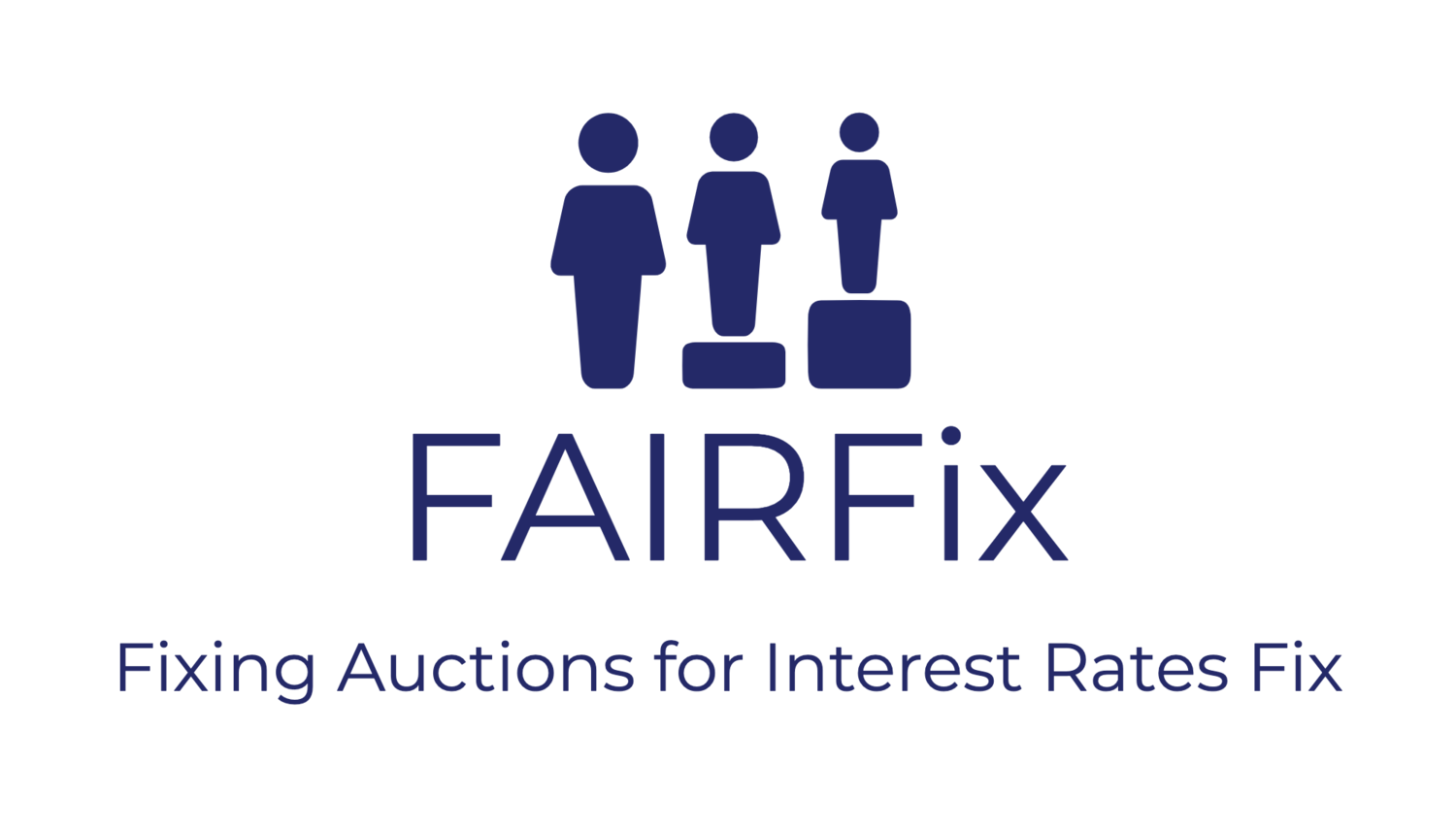
Overview of the FAIRFix methodology
Fixing Auctions for Interest Rates Fix (FAIRFix) is a market place for pricing the fair market rate for all borrowing and lending that needs to lock in a term rate.
FAIRFix will start life as a point-in-time Central Limit Order Book (CLOB) of competitive bids and offers in regular ARR OIS swaps. From this order book will be created a mid-market rate that will be published for all to see and compare with the prices in the OTC market for those ARR OIS swaps.
At this point a new order type will be introduced to FAIRFix: Non-competitive orders (i.e. at market orders) will start to be accepted to an auction that nets the non-competitive order book before submitting the net balance (in the form of an at market bid or offer in a regular OIS swaps) into a Modified Dutch auction (sometimes called an OpenIPO auction) with the competitive order book providing the liquidity that will determine the fair market rate for that day’s term rate.
Lending institutions would then be able to take advantage of this competitive liquidity in the FAIRFix auction to price fair market term rates on their ARR indexed loans with their customers. For example if a bank were to lend a client $500M for 4 years at 3 month SOFR FAIRFix plus 100 basis points, the bank would submit a non-competitive order to pay 3 month SOFR OIS in the FAIRFix auction every quarter. This order would transact at the FAIRFix auction clearing price and this transaction would determine that day’s 3 month SOFR FAIRFix rate that the client would pay on their loan (plus the addition of the 100 basis points) for that quarter. The client will therefore be able to lock their loan rate reset at the fair market rate for 3 month SOFR and continue to operate their funding operations very much as they are used to doing now with LIBOR. The bank on the other hand will swap their 3 month term fixed asset for an overnight SOFR compounding in arrears asset (via the 3 month SOFR OIS that they have transacted in the auction) that matches off perfectly with their overnight funding operations.
FAIRFix will conduct daily auctions for 1, 3, 6 and 12 months OIS to create term rates for these four tenors as a direct replacement for the LIBOR term rates that end users have grown used to using. These term fixing rates will be suitable for use in all cash and derivative products and can even function as the risk free rate element of a Synthetic LIBOR created by the addition of a Credit Spread add-on (such as ICE BYI or SOFR Academy’s AXI).
The derivative obligation
This fixing rate can be used in derivative contracts due to a special condition that makes FAIRFix unique. This condition is a contractual obligation, on one party to any FAIRFix derivative contract, to submit their resultant fixing exposures, in the form of a non-competitive order, to the relevant FAIRFix auction, such that any risk (exposure) that rolls off is replaced by a regular OIS swap, transacted at the FAIRFix auction (at that days FAIRFix fixing rate). The effect of this is to transform that parties exposures from FAIRFix term fixings to overnight compounded in arrears ARR fixings.
This condition is necessary to ensure that market makers are not conflicted when operating at the auction as their orders neutralise their exposures to the fixing and to ensure that non-market makers cannot manipulate the fixing by building up a large position in the fixing and then trying to move the market their way by trading regular OIS swaps in the Over The Counter (OTC) market. It also mandates (non-competitive) demand for a competitive prices at the auction, thus encouraging market makers to supply this liquidity. This is unique amongst auction methodologies and will further enhance liquidity so lacking in the nascent ARR such as SOFR and SARON.
In this way end users get a term fixing rate, derived from transactions, that they can use much like they use IBOR benchmarks currently, while sell-side institutions swap their exposures to this term fixing rate for the overnight realised rate, transforming the risk profile of their interest rate exposures from a term fixing ARR rate into an overnight ARR rate, that matches perfectly the risk profile of regular ARR OIS swaps. This results in a term fixing that is underpinned by the entirety of notional of transactions in the overnight fixing benchmark, as exposure to the FairFix fixing rate is economically equivalent to exposure to the realised overnight rate.
10 Commandments for Term Fixings checklist

